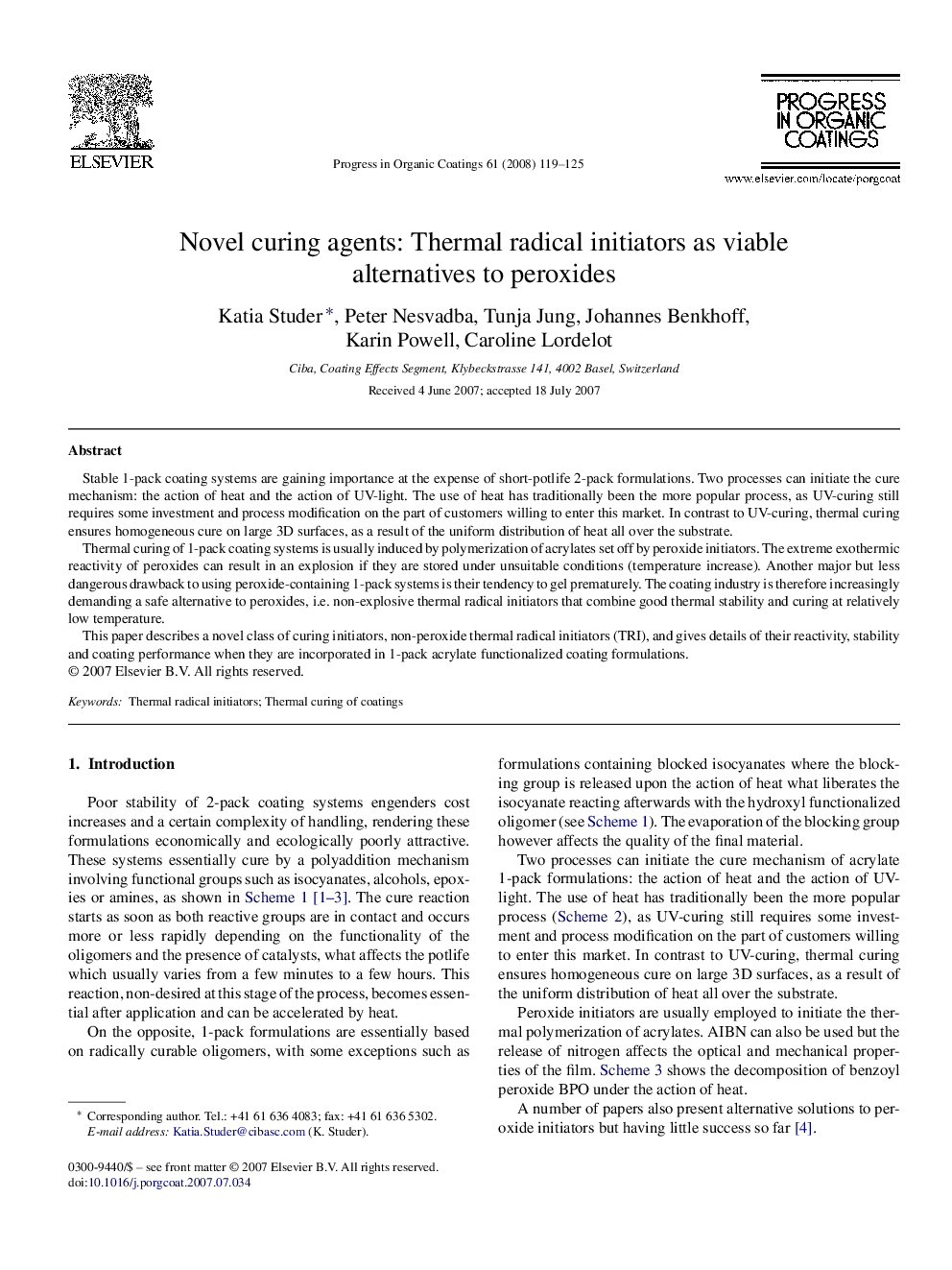| Article ID | Journal | Published Year | Pages | File Type |
|---|---|---|---|---|
| 694005 | Progress in Organic Coatings | 2008 | 7 Pages |
Stable 1-pack coating systems are gaining importance at the expense of short-potlife 2-pack formulations. Two processes can initiate the cure mechanism: the action of heat and the action of UV-light. The use of heat has traditionally been the more popular process, as UV-curing still requires some investment and process modification on the part of customers willing to enter this market. In contrast to UV-curing, thermal curing ensures homogeneous cure on large 3D surfaces, as a result of the uniform distribution of heat all over the substrate.Thermal curing of 1-pack coating systems is usually induced by polymerization of acrylates set off by peroxide initiators. The extreme exothermic reactivity of peroxides can result in an explosion if they are stored under unsuitable conditions (temperature increase). Another major but less dangerous drawback to using peroxide-containing 1-pack systems is their tendency to gel prematurely. The coating industry is therefore increasingly demanding a safe alternative to peroxides, i.e. non-explosive thermal radical initiators that combine good thermal stability and curing at relatively low temperature.This paper describes a novel class of curing initiators, non-peroxide thermal radical initiators (TRI), and gives details of their reactivity, stability and coating performance when they are incorporated in 1-pack acrylate functionalized coating formulations.
